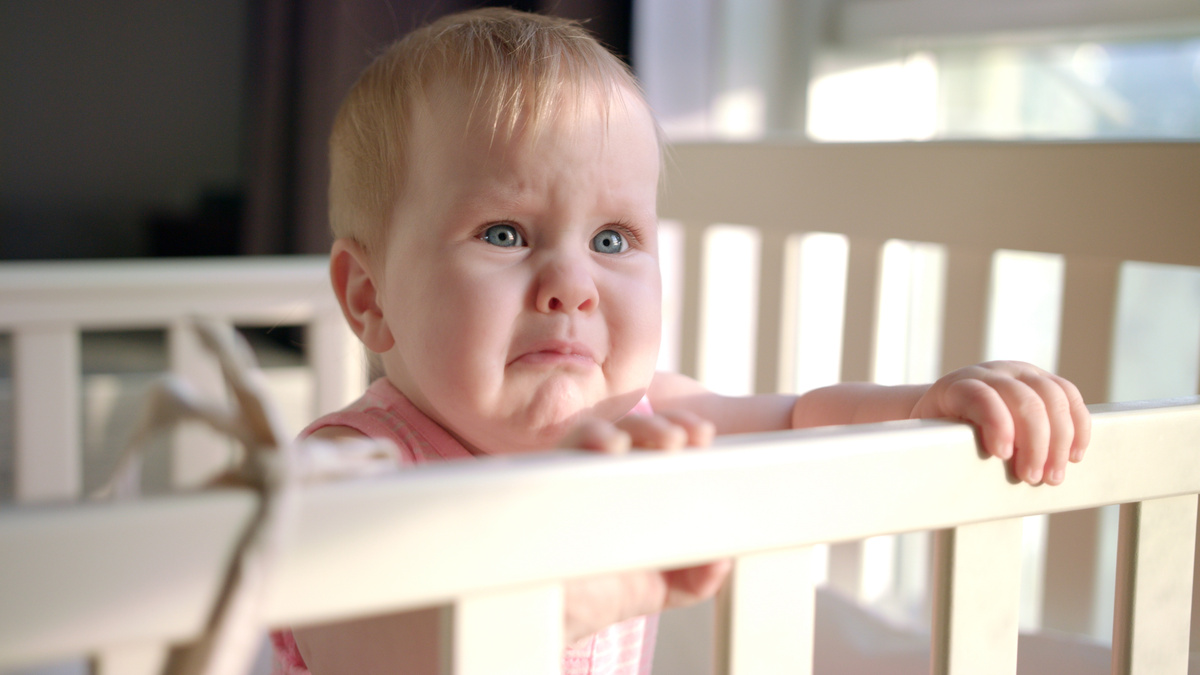
Separation anxiety typically peaks around 8 to 10 months, though it can surface at various stages of infancy. It’s crucial to recognize the signs, which may include increased clinginess, crying when you leave the room, and resistance to sleep routines. As a sleep consultant, I emphasize the importance of acknowledging your baby’s emotions and creating a supportive sleep environment that eases their anxiety. Your baby is learning object permanence. This means that they realize what (or who) has left their sight still exists and will come back. This skill is developing around the same time as the height of separation anxiety.
While it’s entirely normal for babies to experience separation anxiety, finding a balance between fostering independence and ensuring restful sleep can be a delicate task. The good news is, if your baby has been taught to fall asleep independently, they may show less signs around sleep times of separation anxiety. If they still rely on a sleep prop to put them to sleep, you may find that the wakings are more frequent and your assistance to go back to sleep is more involved.
Develop a Personalized Sleep Plan
If you have worked with me, you already have this!! Go back to step one of your plan and reimplement the same strategies. If you haven’t, start by assessing your baby’s current sleep habits, including bedtime routines and nap schedules. A consistent routine can provide a sense of security for your little one, helping to alleviate anxiety.
Be intentional
During the day, spend extra time together. Carve out a time for more snuggles, reading and playing together, giving a warm bath, playing soft music and offer comfort and reassurance during their awake time before naps and bed.
Transitional Objects
Consider adding a comfort object to your baby’s routines to give a sense of familiarity & security. A sleep sack is a great addition. A lovey is also something to consider for an older baby.
Balance Independence and Comfort
While promoting independence is essential, it’s equally crucial to strike a balance that respects your baby’s need for comfort and security. Implementing sleep training techniques with a gentle and supportive approach ensures that your baby feels loved and cared for throughout the process. Again, if you have a Sleep Plan from me, this looks like offering a quick check in at bedtime after a designated wait time. The goal is to offer reassurance to your baby, not put them to sleep (that’s their job!).
During the Day
You can put your baby on a safe floor surface & practice leaving the room for a short time. Tell your baby you’ll be right back and then come back after a few seconds. This will show your baby that objects that leave actually *do* still exist and will come back. You can practice with a toy as well!
Allow your baby to crawl into another (safe) room. This gives them independence and shows them that separating from you is okay!
Sleep training in the midst of this developmental time can feel stressful. It’s a neurological skill that will be developed over time and can still be a successful time to help your child learn independent sleep. When I create a Sleep Plan for a child, I’m looking at the overall child. Their age, their typical day, what’s most appropriate for them in terms of timing of naps and bedtime, the feeds, developmental milestones and skills, etc. All of these pieces play a critical role in helping to ease anxiety in general, but I’ll also give you the tools to work through this transition with your baby.
A Word on Toddlers and Older Kids
Your calm, predictable routine is still immensely important for and older kiddo. I allow older clients to have a night light (but only one) that is either light amber colored or a dim red (as on an okay-to-wake clock). You can give your child an item that belongs to you (a t-shirt, or something similar) so that they have a piece of their parent in their bed at night. You can also add a picture of you (the parent(s)) to their bedside for them to look at in the night if they’re worried or afraid.
Validate their feelings. Practice calming exercises during the day that they can also use at bedtime and during the night.
Be mindful of what your child is watching/listening to. All screens should be turned off 1-2 hours before bed. Avoid having news on as a “background noise”, their brains are soaking in so much more than we realize.






